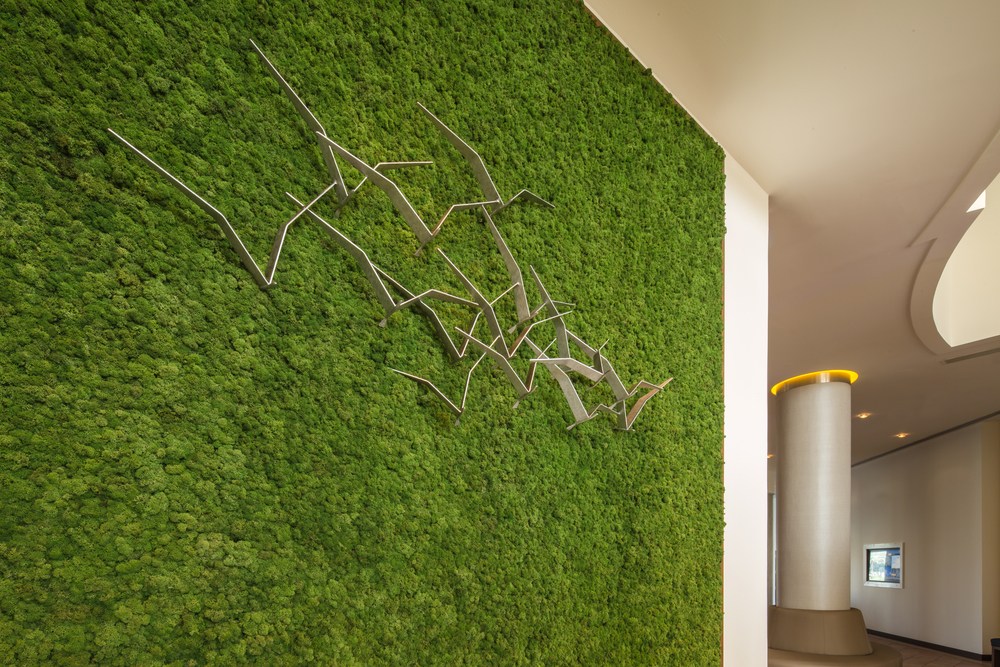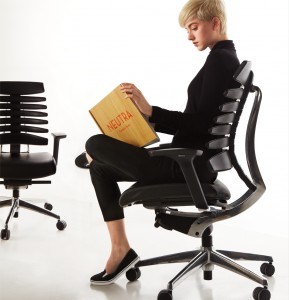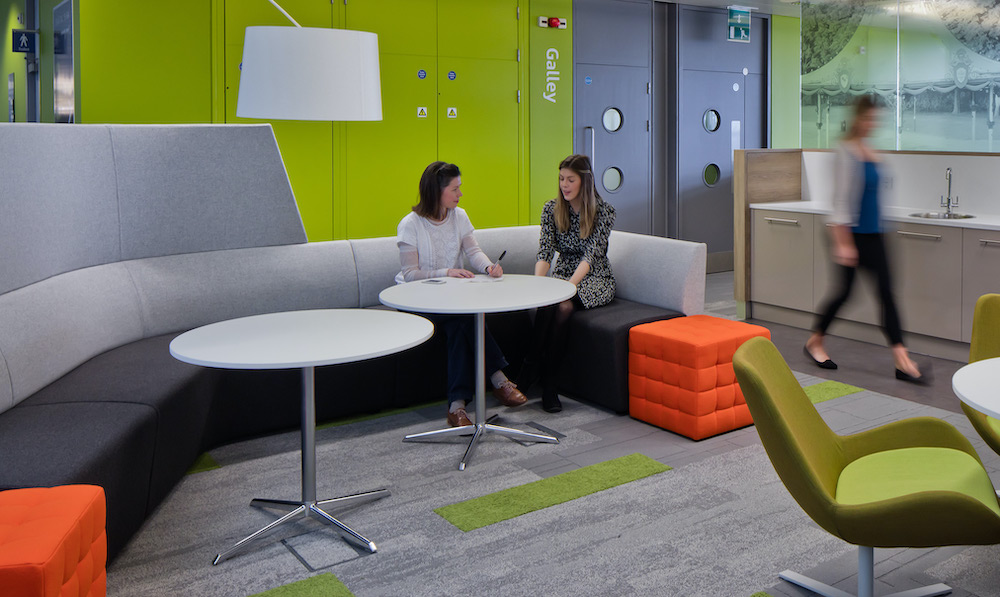Details
The Bioiphilic Design Checklist
16 Oct 2016Most people starts frowning or scratching their heads when the words ‘biophilic design’ get thrown into the design brief. To the uninformed individual, the word ‘biophilia’ immediately sparks the imagination to draw up images of greenery in its various settings. And it’s followed by frustration owing to the attempt at figuring out how those green images can fit into the concrete jungle they have to work with.
However, Biophilic Design is design on a far deeper level. Done correctly, it can effectively communicate the connection between nature, human-beings and the environment we build for ourselves. We’ve mentioned before how nature can be used to nurture.
Terrapin Bright Green launched a detailed and enlightening report listing the various Biophilic Design Patterns. Below, we take a chance at explaining the 14 patterns, divided into 3 categories :
Nature in the Space
Working in a space with natural outdoor elements, appeals to a more primal and connected sense of being. It’s one where we feel more connected and in sync with nature other living organisms. This translate to a state of calm and focus, as opposed to the distractions, both visually and mentally, in an artificial environment.
Visual Connection with Nature
Research has indicated a positive response by subjects to elements in nature. Lower blood pressure, reduced stress, positive emotional state and faster recovery times, improved attitudes and over well-being. Biodiversity has shown to have a much better impact than compared to just land ( vast sceneries ).
Visual design elements can be views from slope down into greenery, non-threatening animals, or bodies of water. As much as possible, this should be achieved with actual nature and not through a digital screen as companies try and do.
Non-Visual Connection with Nature
The background effects - auditory, haptic, olfactory stimuli. This is more deliberate but subtle attempt to reference nature, living systems and natural processes. It’s shown to have a gradual and benefitting effect on mental health.
This can be introduced as natural sounds - running rivers, ocean waves, trees against the wind etc. If allowed, Pet therapy is another phenomenal way to improve overall mental health and well-being.
Non-Rhythmic Sensory Stimuli
Described as a stochastic but ephemeral connection to nature. These are connections and feeling we cannot predict or comprehend at a moment. They provide a welcome distraction, leaving us feeling happy and elated.
Think of the feeling you get when you’re next to a campfire, even if you can’t see it. Or a bees around a flower. It distracts you but also recharges your mental energy when focused on a task for a long time.
Thermal & Airflow Variability
Thermal & Airflow Variability can be characterized as subtle changes in temperature, relative humidity, airflow across the skin, and surface temperatures that mimic natural environments. Spaces with this design element feel active, alive and invigorating. It’s also shown to have an impact on productivity of workers in the space.
This is easy to incorporate - well ventilated spaces, operable windows, proximity to windows and seating spaces with different lighting are included in this design element.
Presence of Water
Visual and non-visual exposure to water elements can be captivating and calming at the same time. Of the four elements, water is the most calming. Moving water creates negative ionization, which is a mild physiological stimulant.
While difficult to achieve in a commercial space, views of water bodies ( a luxury not available to all ), flowing water in the form of gentle indoor fountains or water falls can be very helpful. The most common is playing the sound of ocean waves.
Dynamic & Diffuse Light
Varying the intensity of light and the shadows create visual simulations of what it would be like to work outdoors and closer to nature. Lighting also affects moods and brings about different psychological responses to tasks, hence the term ‘ Mood Lighting ‘.
The goal here to blend well lit spaces with diffused ones. Creating spaces of high contrast lighting situations defeats the purpose and causes discomfort. Diffuse lighting on vertical and ceiling surfaces provides a calm backdrop to the visual scene. Accent lighting and other layering of light sources creates interest and depth, while task or personalized lighting provides localized flexibility in intensity and direction. These layers help create a pleasing visual environment
Connection with Natural Systems
Either on a conscious or subconscious level , awareness of natural systems and processes taking places is a sign of a healthy connection to the ecosystem around you. Depending on the surrounding and the level of connection, this can leave with in a wide range of states - relaxed, nostalgic, profound or enlightened.
The best way to do this is to have as many employees or workers face the outdoors as possible. Viewing climate changes and effects on the environment are the best way to stimulate the mind.
Natural Analogues
Biomorphic Forms & Patterns
Naturally occurring forms and patterns, when viewed constantly, have a subliminally positive effect - they serve as visual reference to nature. A space with good Biomorphic Forms & Patterns feels interesting and comfortable, possibly captivating, contemplative or even absorptive.
This design is fairly easy to implement in spaces and can be through visual features in the interior design and decorations. Painting, wallpapers and even furnishing can achieve this. Less use of straight lines and right angles, flower patterns, animals skins are all ways to achieve this.
Material Connection with Nature
This includes any design that reflects ecology or geology, creating a sense of localization and belonging. It leaves us warm and with a feeling of authenticity.
Using natural colors and patterns like wood, rock and marble colors are easy ways to do this. Using real materials in place or synthetic also help ; the human brain can easily distinguish the two in most cases and create the connection with nature.
Complexity & Order
Putting it in simple terms, with relative heights, scales and general spatial arrangements can create exciting spaces. Architects and interior designers do this by exposing ceiling or certain structural elements.
Nature of the Space
The final piece to Biophilic design puzzle. Adjusting the very nature of the space keeping in mind architecture, outside views and conditions and every condition mentioned above to create as natural a working environment as possible.
Prospect
Far and wide views, uninterrupted by wanted structures, is what the prospect condition in Biophilic design means. It makes one feel open and free, and has proven to be good for productivity and creativity. It also imparts a sense of safety and control
The objective is to provide a view comprehensive enough to survey and understand the outside environment in a large way. This is mostly only possible with lots of glass from a high elevated view.
Refuge
The refuge area is a space designed for withdrawal or escape from the core or center of activity and energy. It provides space for solitude and protection from distraction or threat.A good refuge space feels separate or unique from its surrounding environment; its spatial characteristics can feel contemplative, embracing and protective, without unnecessarily disengaging.
Refuge designs include closed areas, lower ceiling heights, areas with differing spatial dimensions and lighting. The most important design aspect here would be some form of concealment.
Mystery
The concept of designing a space to include an element of mystery, simply means to design a space that’s inviting and exciting, compel a want to engage with the space more.
Mystery engenders a strong pleasure response within the brain that may be a similar mechanism to that of anticipation, which is hypothesized to be an explanation for why listening to music is so pleasurable – in that we are guessing what may be around the corner.
Design wise, integrating mystery means looking into degrees of curves, dramatic shades and the speed with which a users can move through spaces.
Risk/Peril
Risk/Peril is including a pattern of intrigue, arising from the thrill of danger. It’s akin to the feeling you get riding on a roller-coasting, in spite of the safety harness, the rush we get is what excites us.
Rush and excite release dopamine, the neurotransmitter chemical involved in the feeling of happiness. The design strategy here relies on spatial conditions and playing with heights. It’s the guarantee of safety and perceived danger at the same time that is key here.
The Total Office provides work space solutions focusing on ergonomic and collaborative products that meet global environmental standards.
“Creating your work experience using ours”










.jpg)